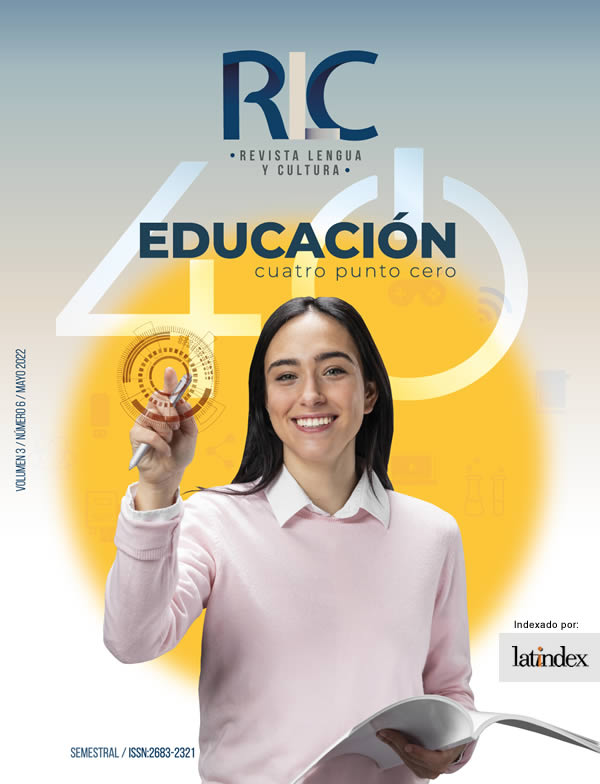CROSSLINGUISTIC INFLUENCE OF AN L3 ON AN L2 IN THE PRODUCTIVE LANGUAGE SKILLS
Abstract
Multilingual speakers usually pass through a process of mixing the languages they are learning. For this reason, the purpose of this research was to detect the role of an L3 in the output of an L2. In order to find an answer, students who have English as L2 and were studying a third language (German and Korean) were submitted to three different speaking and writing exercises to identify crosslinguistic syntactic and phonological influences of their L3s due to typological closeness. The results were obtained by making use of an observation sheet and checklists; the data is presented on graphs and descriptive paragraphs. At the end of the research, it was shown that close languages (typologically speaking) create more conflicts in pronunciation for multilingual speakers than distant languages. The impact of this research lay in detecting how multilingual students perform a switching process in different languages and making them conscious of this phenomenon
Downloads
References
Angelis, G. (2007). Third Or Additional Language Acquisition. Multilingual Matters. Retrieved from https://books.google.com.mx/books?id=OCTSJfLKh-4C&dq=crosslinguistic+influence&hl=es&source=gbs_navlinks_s
Angelovska, T., Hahn, A. (2012). Written L3 (English): Transfer Phenomena of L2 (German) Lexical and Syntatic Properties in D. Gabryś-Barker (Ed.), Cross-linguistic Influences in Multilingual Language Acquisition. (1st ed., pp. 23-40). Springer.
Bouchhioua, N. (2016). Cross-Linguistic Influence On The Acquisition Of English Pronunciation By Tunisian EFL Learners. European Scientific Journal. 12(1857-7431), 260-280. http://dx.doi.org/10.19044/esj.2016.v12n5p260
Brown, A. (2014). Pronunciation and Phonetics: A Practical Guide for English Language Teachers. Routledge. Retrieved from https://books.google.com.mx/books?id=FEosAwAAQBAJ&dq=what+is+pronunciation&hl=es&source=gbs_navlinks_s
Cook, V. (2016). Second Language Learning and Language Teaching. Routledge. Retrieved from https://books.google.com.mx/books?id=jMkeDAAAQBAJ&dq=pronunciation+transfer&hl=es&source=gbs_navlinks_s
Duff, P. (2008). Case Study Research in Applied Linguistics. Routledge. Retrieved from https://books.google.com.mx/books?id=Hf0vSdCV0QAC&dq=case+study&hl=es&source=gbs_navlinks_s
Forsyth, H. (2014). The Influence of L2 Transfer on L3 English Written Production in a Bilingual German/Italian Population: A Study of Syntactic Errors. Open Journal of Modern Linguistics. 04(429-456), http://dx.doi.org/10.4236/ojml.2014.43036
Griehaber,W., Rehbein,J. & Şimşek, S. (2006). Third Language Acquisition. Waxmann Verlag GmbH. Retrieved from https://books.google.com.mx/books?id=-vEeAHsRsJcC&dq=third+language+acquisition&hl=es&source=gbs_navlinks_s
Griffee, D. (2012). An introduction to Second Language Research Method: Design and Data. TESL-EJ Publications. Retrieved from http://www.tesl-ej.org/pdf/ej60/sl_research_methods.pdf
House, S. (2011). Didáctica del Inglés: Classroom Practice. GRAÓ de IRIF, SL. Retrieved from https://books.google.com.mx/books?id=NRNXFhfqNrYC&dq=productive+skills&hl=es&source=gbs_navlinks_s
Jiang, W. (2009). Acquisition of Word Order in Chinese as a Foreign Language. Mouton de Gruyter GmbH & Co. Retrieved from https://books.google.com.mx/books?id=WX9Wh0z91KEC&dq=word+order+transf
Madlener, K. (2015). Frequency Effects In Instructed Second Language Acquisition. Mouton de Gruyter GmbH & Co. Retrieved from https://books.google.com.mx/books?id=hYllCwAAQBAJ&hl=es&source=gbs_navlinks_s
Peukert, H. (2015). Transfer Effects in Multilingual Language Development. John Benjamins Publishing Company. Retrieved from https://books.google.com.mx/books?id=eA8UCAAAQBAJ&dq=CROSSLINGUIS
Piske, T., & Young, M. (2009). Input Matters in SLA. Multilingual Matters. Retrieved from https://books.google.com.mx/books?id=8CX_x0v3F-sC&hl=es&source=gbs_navlinks_s
Song, J. (2014). Linguistic Typology: Morphology and Syntax. Routledge. Retrieved from https://books.google.com.mx/books?id=K0uDBAAAQBAJ&hl=es&source=gbs_navlinks_s
Song, J. (2012). Word Order. Cambridge University Press. Retrieved from https://books.google.com.mx/books?id=rs5HbYxydigC&dq=word+order&hl=es&source=gbs_navlinks_s
Verschik, A. (2008). Emerging Bilingual Speech: From Monolingualism to Code-Copying. Continuum. DOI:10.13140/2.1.4132.2564
Copyright (c) 2022 Abril Arlet Antunez Aguilar

This work is licensed under a Creative Commons Attribution-NonCommercial-NoDerivatives 4.0 International License.













